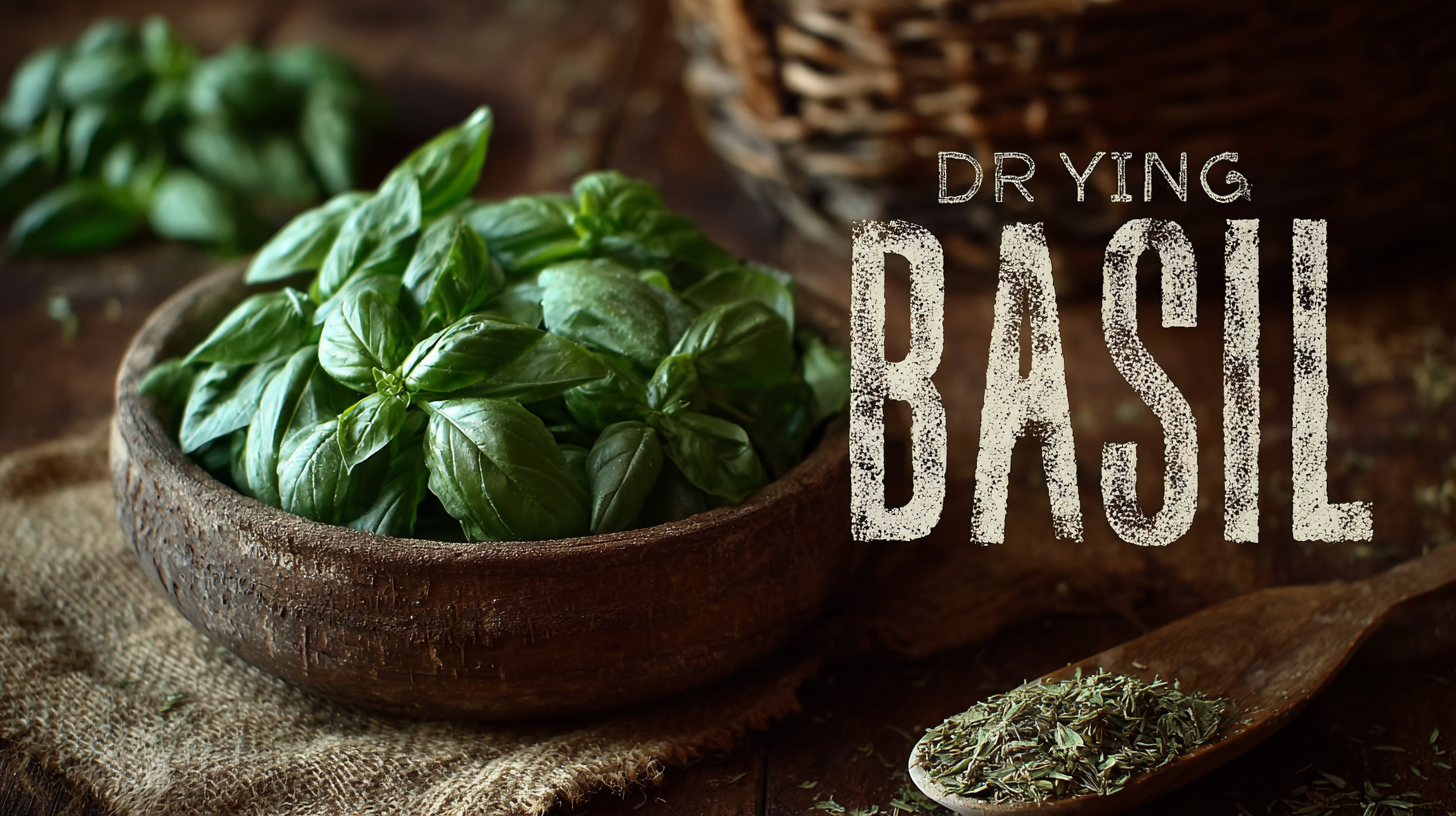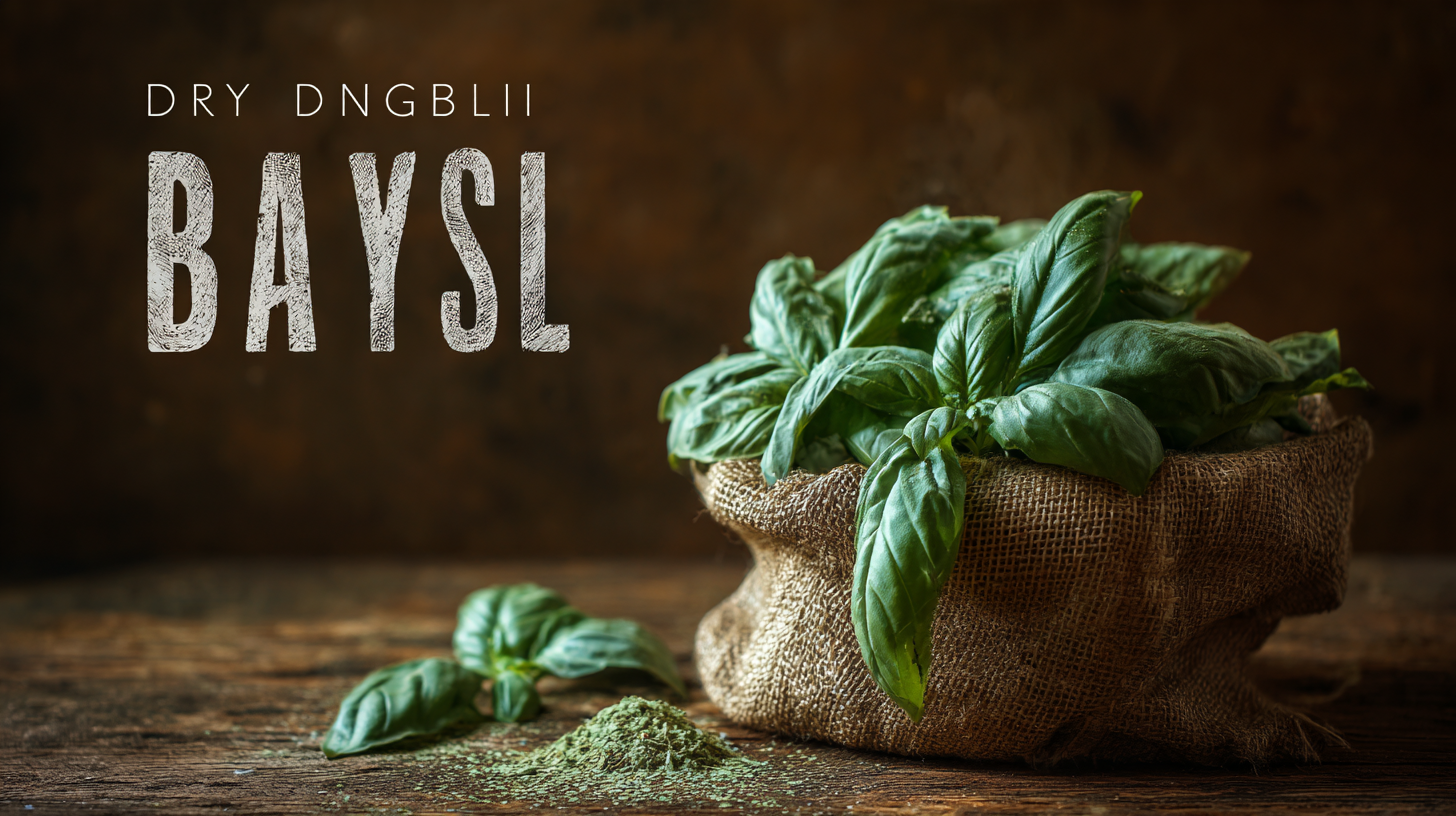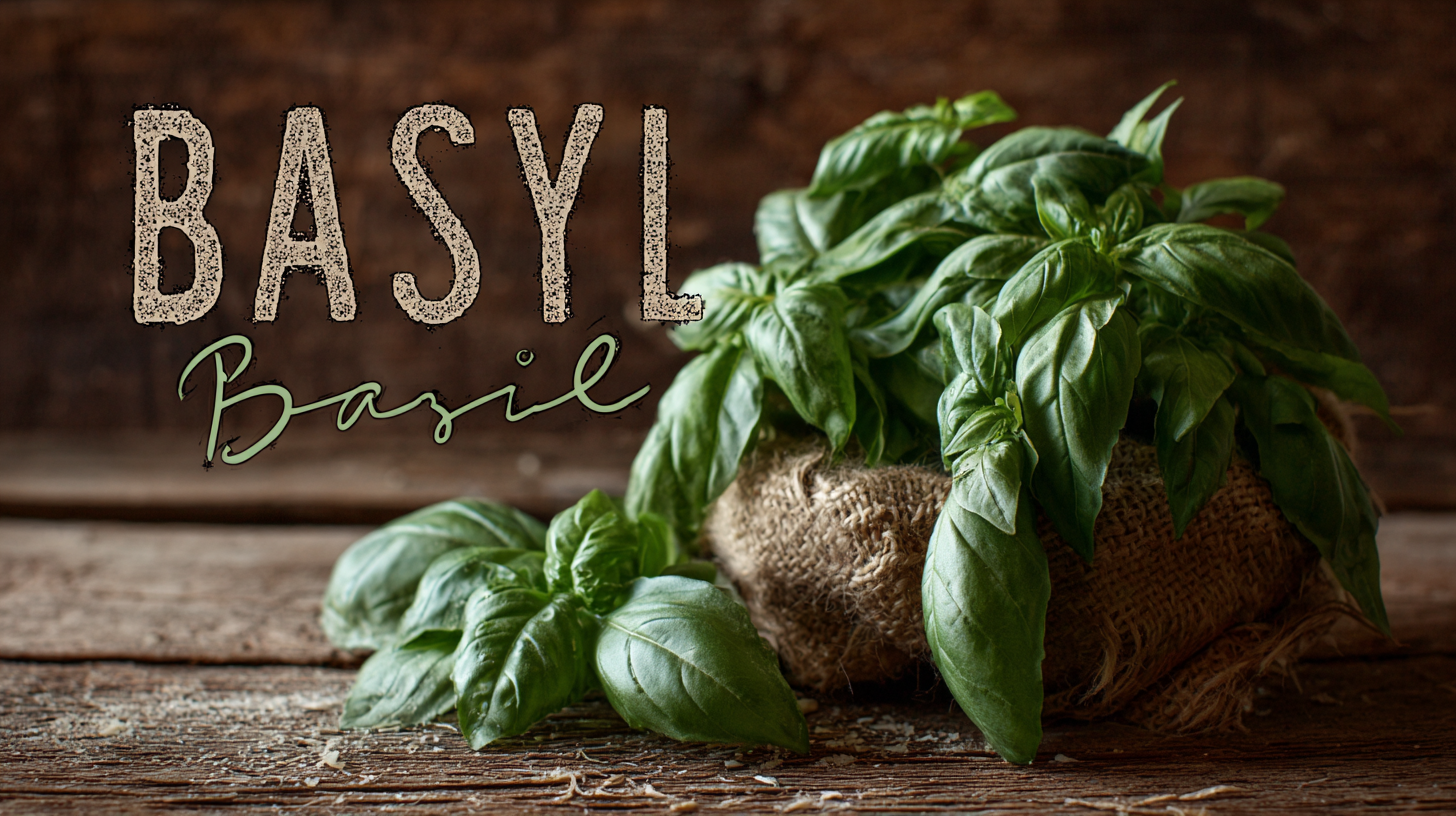Dried herbs have long been a staple in kitchens around the world, and among them, drying basil stands out for its unique flavor profile and versatility. According to the International Herb Association, the global dried herb market is anticipated to reach approximately $1.4 billion by 2027, driven by the increasing consumer preference for natural seasonings over synthetic flavors. Drying basil not only preserves its aromatic qualities but also makes it a convenient ingredient for culinary creations across various cuisines—from Italian pasta to Thai curries. As more chefs and home cooks recognize its potential, understanding how to effectively incorporate drying basil can elevate your dishes and bring the essence of fresh basil to a wide array of recipes. Whether you're looking to enhance your gourmet meals or simply add a touch of flavor to everyday cooking, the art of using drying basil allows for a delightful exploration of global culinary traditions.

Dried basil is a versatile herb that enhances dishes across global cuisines, from Italian to Thai. In Italian cooking, dried basil is a staple in tomato sauces, pizzas, and classic pesto. Its slightly sweet and peppery flavor intensifies during cooking, making it an excellent choice for long-simmering dishes. When using dried basil, it’s essential to add it early in the cooking process to allow its flavors to bloom fully.
In Mediterranean and Middle Eastern cuisines, dried basil complements grilled meats and vegetable dishes beautifully. It can be sprinkled on roasted eggplant or mixed into yogurt sauces for a refreshing dip. For a twist, consider infusing olive oil with dried basil; this creates a fragrant drizzling oil that elevates salads and grilled vegetables.
**Tips:** When substituting dried basil for fresh, remember that dried herbs are more concentrated; use one-third of the amount called for fresh. To best preserve its flavor, store dried basil in an airtight container away from light and heat. Finally, crushing dried basil between your fingers before adding it to a recipe releases its essential oils, amplifying its aromatic qualities.
| Cuisine | Dish | Basil Usage | Flavor Profile |
|---|---|---|---|
| Italian | Pesto | Mixed with garlic and nuts | Savory, Nutty |
| Thai | Green Curry | Used in curry paste | Sweet, Spicy |
| French | Herb de Provence | Blended with other dried herbs | Fragrant, Earthy |
| Indian | Dal Tadka | Garnished before serving | Robust, Earthy |
| Spanish | Bruschetta | Sprinkled on top | Fresh, Herbaceous |
 Dried basil, known for its aromatic qualities and vibrant flavor profile, is a staple in kitchens around the world. Its sensory attributes include piquancy, minty undertones, and sweet notes that can enhance a variety of dishes, from pasta sauces to Mediterranean salads. Recent qualitative phytochemical screenings reveal that basil is rich in bioactive compounds, contributing not only delicious flavor but also potential health benefits.
Dried basil, known for its aromatic qualities and vibrant flavor profile, is a staple in kitchens around the world. Its sensory attributes include piquancy, minty undertones, and sweet notes that can enhance a variety of dishes, from pasta sauces to Mediterranean salads. Recent qualitative phytochemical screenings reveal that basil is rich in bioactive compounds, contributing not only delicious flavor but also potential health benefits.
Tips: When using dried basil, it's essential to balance its intensity with other herbs and spices. For a more nuanced flavor, try combining dried basil with flavors like garlic or citrus. Additionally, the method of drying can influence the herb’s chemical composition and potency, so consider air-dried varieties for the best aroma.
Understanding the flavor profile of dried basil can elevate culinary creations. When adding it to your dishes, remember that its flavor is more concentrated than fresh basil. Start with smaller amounts, and taste as you go to achieve the desired depth of flavor. This ensures that the unique spicy and clove-like characteristics of dried basil shine through without overpowering your meals.
When it comes to enhancing the flavor of culinary creations, dried basil stands out as a fantastic herb. To ensure you get the maximum freshness and flavor from your dried basil, proper storage and preservation are essential. Here are some essential tips for keeping your dried basil in top condition.
First, always store your dried basil in an airtight container. Exposure to air can lead to loss of flavor, so a glass jar or a quality plastic container with a tight-fitting lid works well. Keep it in a cool, dark place away from direct sunlight, which can degrade the herb's quality over time. Using a vacuum seal bag can also extend its shelf life significantly if you have ample storage space.
Another vital tip is to avoid storing dried basil near heat sources, such as the stove or oven. Heat can cause the essential oils in basil to evaporate, diminishing its aroma and flavor. For those who like to buy in bulk, consider dividing your basil into smaller portions to use regularly while keeping the rest sealed and stored properly. Following these guidelines will ensure that your dried basil is always ready to elevate your dishes with its delightful taste.

Dried basil, with its aromatic depth and versatile flavor, is a staple in culinary traditions worldwide. From Italian pasta sauces to Thai curries, this humble herb enhances dishes while offering a hint of familiarity in flavors. One creative way to showcase dried basil is by incorporating it into a Mediterranean-inspired quinoa salad. Combine cooked quinoa, diced cucumbers, cherry tomatoes, olives, and feta cheese. Toss everything with olive oil, lemon juice, and a generous sprinkle of dried basil for a refreshing dish that bursts with flavor.
Another delightful way to explore the culinary use of dried basil is through Indian cuisine. Consider adding dried basil to a classic dal preparation. Cook lentils with onions, garlic, and tomatoes, then stir in a teaspoon of dried basil before serving. This not only enriches the dish with a unique twist but also complements the existing spices beautifully.
**Tips:** When using dried basil, remember to crush the leaves between your fingers before adding them to your dish. This releases the essential oils and enhances the flavor. Additionally, consider pairing dried basil with other herbs like oregano or thyme to create complex flavor profiles in your cooking.
When it comes to enhancing flavors in culinary creations, pairing dried basil with other herbs and spices can elevate your dishes significantly. Dried herbs, including basil, are often underestimated; however, they are known to be more concentrated in flavor than their fresh counterparts. As culinary experts advise, the process of drying herbs intensifies their taste, making a little go a long way. For instance, dried basil aligns beautifully with woody herbs like thyme and rosemary, creating a harmonious blend that works wonders in Mediterranean dishes.
Moreover, combining dried basil with spices such as garlic powder or red pepper flakes can add depth to savory recipes. A popular pairing is basil with oregano, a classic duo in Italian cuisine, providing a rich herbal background to pizzas and pastas. Research highlights that incorporating various dried herbs into meals not only enhances flavors but can also offer health benefits, as many herbs contain antioxidants and anti-inflammatory properties. Experimenting with these pairings can transform everyday meals into culinary masterpieces, bringing a world of flavors to your table.
